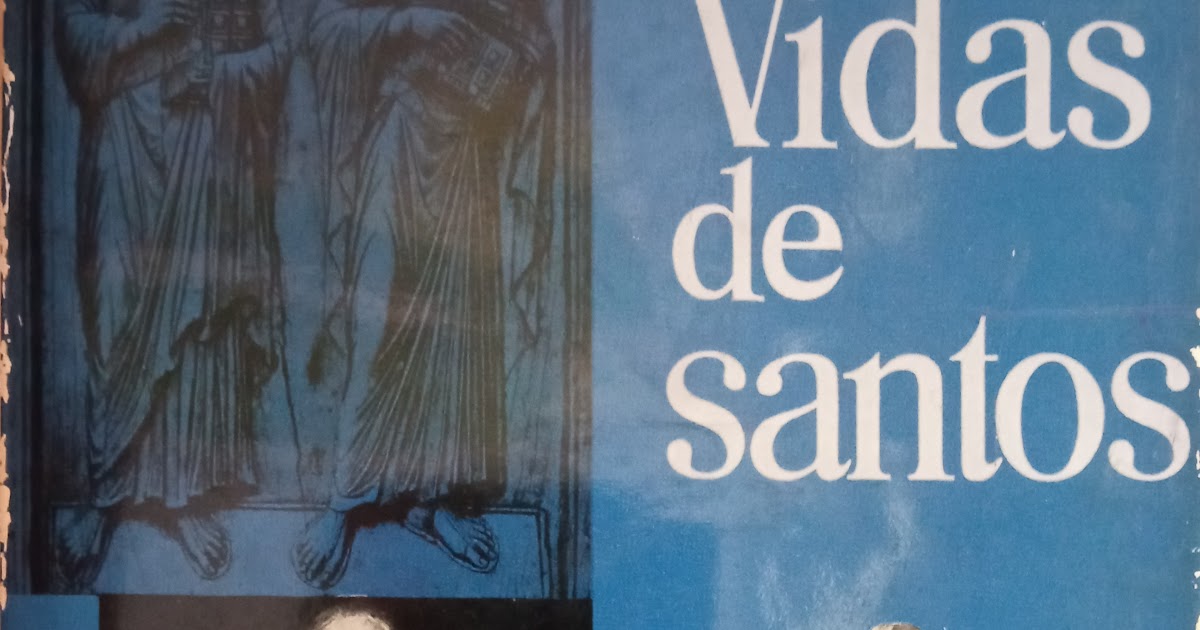
Original language: English
Original title: Live of Saints
Translation: Nuria Parés
Year of publication: 1953
Valuation: Interesting
Yes, it is exactly what it sounds like, pure and simple hagiography.
Although it is now reduced to being Halloween, the truth is that in the Catholic world the recent November 1 has always been All Saints’ Day. So, although a few dates late, we will dedicate today’s review to some of those characters who filled old calendars with names that in many cases evoke at least great-grandfathers with mustaches. All or most of those Serapios, Paulinos and Rigobertos who were or are around the world are, they or their ancestors, related to old religious onomastics.
In this strange and generous volume there is no author, although a fairly uniform prose points to a single pen, perhaps that of a certain Walter J. Black who appears in the credits, and it could be a reduced version of some previous saints dating back to at least to the 18th century. As there are many saints, it is appreciated that they select an elite of around fifty, a few pages of profile for each one, a screening that makes the book more accessible, perhaps at the cost of missing out on some of the many extravagances that I suspect must be be out there. In any case, it seems that we have the most famous ones, which seems clearly enough to me.
I recognize that, even after reading the book and perhaps because I am somewhat far from that pious environment, I still don’t know very well what a saint is, or if they have to meet certain conditions or if it is something more or less discretionary or motivated by criteria that change over time. So I want to see it as the honorary title of Sir, a distinction that someone, be it the English Crown or the Catholic Church, grants because they understand that there are merits of some kind for the character to be valued in a special way, elevated to the altars in our case. In the light of the reading, I am going to allow myself an attempt to characterize some groups of typical characters who, according to what the book says, earned entry into that broad pantheon of illustrious people:
- The martyrs: quite widespread merit in the early days of Christianity, when its apostles tried to spread it throughout the East and South of the Mediterranean, certainly encountering quite fierce opposition in many places.
- Defenders of Orthodoxy: Another good handful of our heroes are distinguished for having been a whip against successive heresies, which were numerous. As if it were the Comintern, the Church made every effort to avoid schisms, some of which nevertheless prospered and in what way
- The scholars: the ones I think are called
doctors of the Church, brainy guys whom today we would perhaps call theologians, dedicated to studying and interpreting the Scriptures and extracting their teachings - Missionaries and evangelizers, some of whom also ended up in a bad way bringing the Good News to the pagan world, including various countries in Europe that had not yet known the Word. We would include here religious people who, especially from the 17th century onwards, worked to extend education especially to the most disadvantaged sectors, leaving names that continue to be seen today in a multitude of schools that we all know.
It must be emphasized that a very high proportion, almost all of those who appear in the book, are distinguished by having led a life of simplicity and austerity, sometimes even obsessive and disproportionate, giving up their goods and all comforts, sometimes to retire to the contemplative life of the hermit, others to live off alms and share the hardships of the poor. This detachment from material things seems one of the most valued merits, in contrast to so many behaviors that are well known.
One last group that I almost forgot about is related to mysticism. All our saints seem to have heard in some way calls from the beyond to fulfill certain missions, but sometimes things go much further, in a very special way, and I am sorry to have to say it, in the female sphere: voices, outbursts, ecstasies and Visions are present in the lives of a few saints along with behaviors that personally give me quite a bad vibe. To cite only the case that seemed most murky to me, Catherine of Siena, who She had about twenty siblings (which may explain some things), when she was fifteen she whipped herself three times a day with a chain, and in addition to all those peculiar mystical experiences it seems that she had stigmata that only she could see. something like the saint who sang Permanent Paralysis. Apparently her body rests separately from her head, each part in a different place, which among saints is not as exceptional as it seems, and to make matters worse she is recognized, I don’t know why, as the patron saint of Europe (oops).
But come on, to finish, with exceptions, they are clearly very devout people but they seem quite normal. Another issue is that they performed miracles, which I believe is a sine que non. Curiously, in the book only a very passing allusion is made to this and preceded by it is said, it is told and similar things. I don’t know, it could be the Anglo-Saxon origin of the book, which at a certain point recognizes ‘a certain tendency to embellish the traditions of the martyrs so that they would never be forgotten’. A very simple conclusion that does not require further explanation.
It is clear that reading the lives (even without miracles) of fifty-odd saints can be a somewhat strange idea. But we must also recognize, and reading the book it is very clear, that regardless of the convictions of each one, our culture has an undoubted Christian root, and what we find in the text, apart from the particular adventures of each character, is the history of Europe itself: from its penetration into the Roman Empire, the structuring of the continent when it fell, the struggles derived from the different divisions or the decisive influence on the States that were formed. Something that could continue until today, when I don’t know if more saints continue to be added, and when religion in general has lost relevance and the power of the Church has been reduced to little more than symbolic.
Source: https://unlibroaldia.blogspot.com/2024/11/anonimo-vidas-de-santos.html


